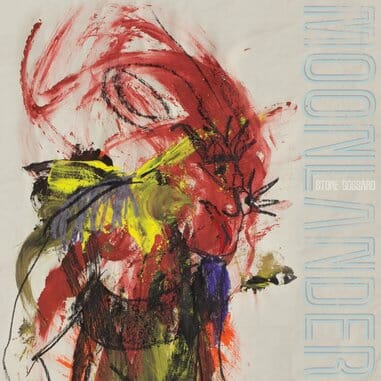
Like his first solo album, Bayleaf, the latest record from Pearl Jam guitarist Stone Gossard is a patchwork release of songs written and compiled over the course of eight years, many of which started as demos for potential Pearl Jam or Brad (Gossard’s side project since 1992) songs that never quite fit either of his bands.
Over the last year, Gossard went through the pile of demo tracks that he’d let build up since 2003 and selected his favorites. Then, he went through the process of finishing each song (including editing, arranging, adding backing instruments and, in some cases, even completely re-recording vocal tracks) until he completed what would eventually become Moonlander.
Needless to say, Moonlander doesn’t really work all that well as a complete album—despite the fact that a few of the songs share vaguely similar aesthetic or lyrical themes (mostly related to space in some way)—but that doesn’t make it unenjoyable by any means. In fact, the loose structure is actually the album’s greatest asset, as it simply presents itself as nothing more than a collection of songs that see Gossard experimenting with sounds and styles and songwriting techniques outside of the realm of his regular bands. With the exception of a couple of tracks that seem to have clearly started out with Pearl Jam in mind (most notably “King of the Junkies”), it’s clear why most of these ideas didn’t get turned into full-band songs.
Take, for instance, the penultimate track “Witch Doctor,” a catchy retro-pop song with big saxophones and fun lyrics that sounds like it would fit just as comfortably on a compilation of children’s songs as it does on this record. Or, there’s the meandering, dramatic “Battle Cry,” which builds slowly and seamlessly transitions between comfortably melodic to an atmospheric, synth-laden rock song. At times, Gossard even indulges in his own version of T. Rex or David Bowie-esque glam rock, particularly on “Moonlander” or the more experimental “I Don’t Want to Go to Bed,” which, if I had to guess, was probably inspired at least in part by his new role as the father of a five-year-old little girl.
This major life event is important to note, because in many ways, Gossard’s daughter was a big influence on him as he completed the Moonlander project, which is ultimately about more than just the contents of the album. Once a week for the 10 weeks leading up to the album’s release, Gossard unveiled a brand new song from Moonlander along with an accompanying piece of artwork that was inspired by time he spent drawing and painting alongside his young daughter. In Gossard’s own words, he wanted the artwork to “convey a sense of freedom from formal rules.”
And like the artwork that accompanied it, Moonlander the album does just that. There are, at times, unavoidable flaws that come along with writing and recording an album in a patchwork fashion, mostly relating to the actual recording quality of some of the tracks and an occasionally incomplete feel from some songs—some of them seem like they haven’t yet been totally worked out enough to be fully realized, or they go on too long as extended jams that could have probably been reeled in a bit—but that’s also where a lot of the album’s charm comes from.
The slapped-together, off-the-cuff feel of the record is ultimately what makes it such a joy to listen to, and while the songs may not individually be the strongest that Gossard has written in the last decade, they all contain at least some nugget of an idea that was worth holding onto and playing around with. Moonlander ultimately succeeds in showing off Gossard’s creativity, and by presenting the album in a mostly lighthearted and laid-back manner, he allows the listener to take an open-minded, almost childlike approach to the songs that really makes for a fun experience.